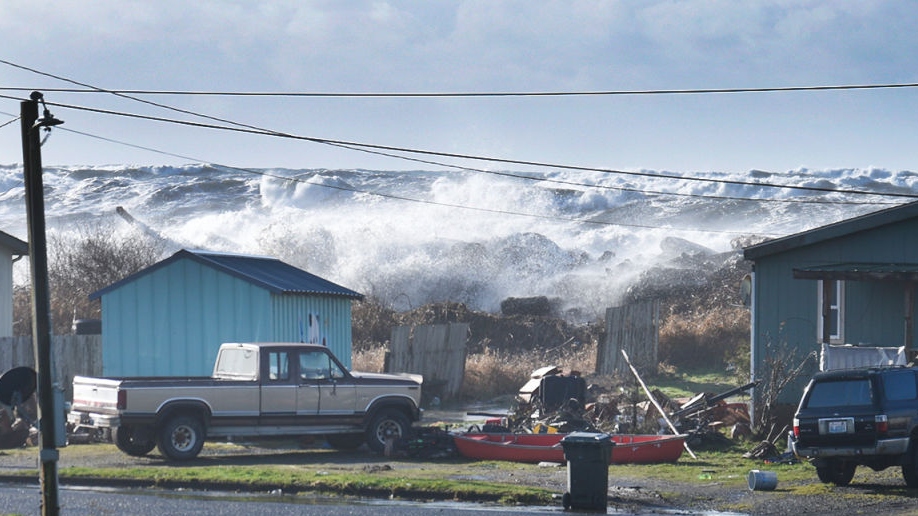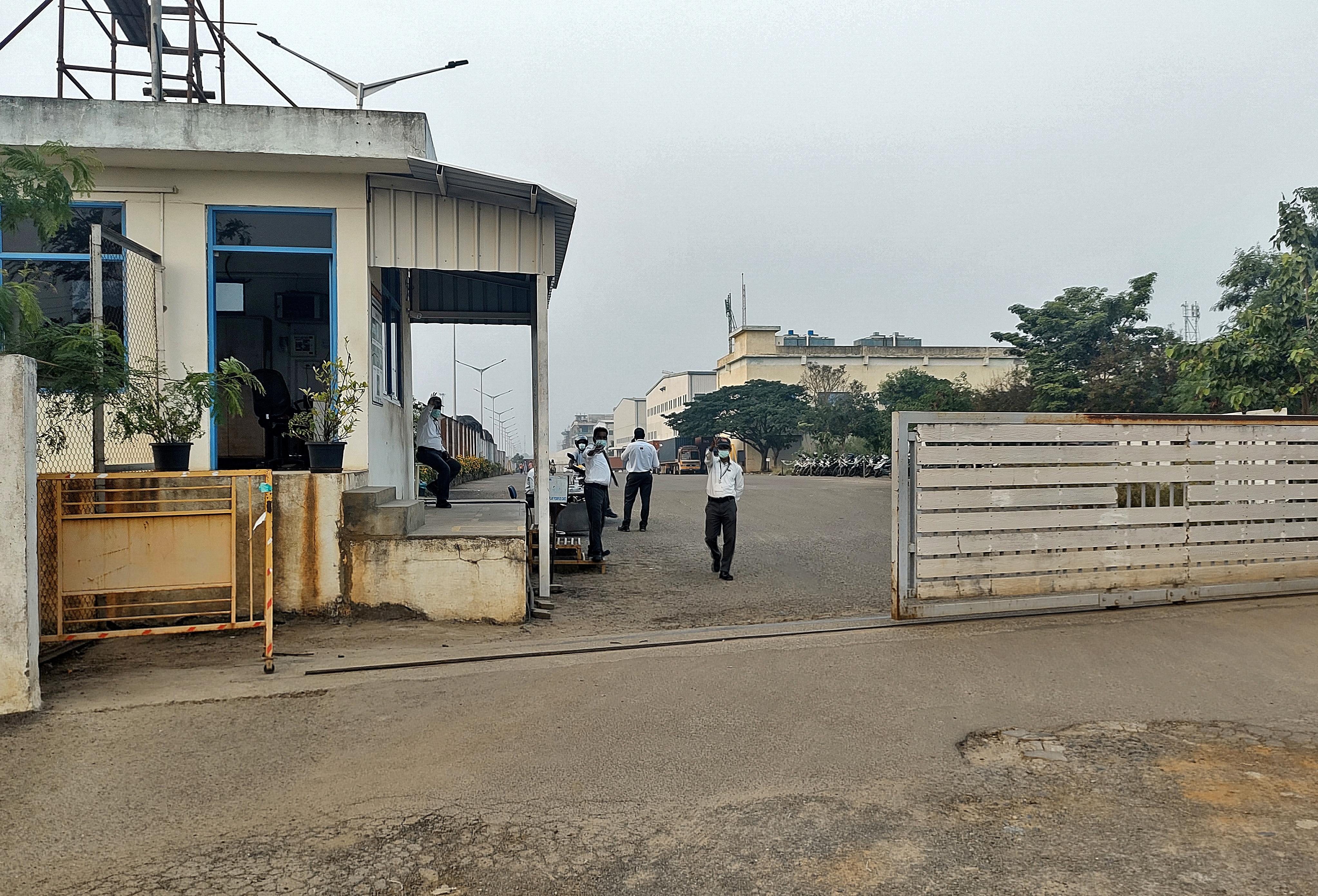Health officials in New York and Boston, some of the first US cities to experience Omicron outbreaks, expressed cautious hope this week that record-setting surges in COVID cases were about to decline. That pattern tracks the experience of countries like the United Kingdom, Denmark, and South Africa, all of which were hit hard by the fast-moving COVID variant but saw the surge recede within three or four weeks.
Most models of Omicron’s spread now agree that, nationally, the surge is likely to hit its high-water mark sometime before the end of January. But in Michigan and Idaho, health officials are warning that cases are rising faster than they can track. What does it mean, then, for a pandemic wave to peak, given this patchwork mix of spiking and dropping cases nationwide?
In a basic sense, a peak is the moment when day-over-day COVID infections begin to decline in a sustained way. That’s not something epidemiologists can observe directly, because they can’t count every single case. But based on the experience of previous waves, says Spencer Fox, the associate director of the COVID Modeling Consortium at the University of Texas Austin, it’s possible to get a sense in advance that infections are declining by looking at case counts. When case counts increase less quickly, it’s a sign that infections are slowing. (Think of a surge as a car speeding down the highway—before the car slows, a foot needs to come off the accelerator.)
In the model used by Fox’s team, “the peak is actually the point in time where the population has built up enough immunity due to the spreading virus to actually start being self limiting. You can think of this as transient herd immunity.” This isn’t the herd immunity that some had hoped would end the pandemic, since it won’t last, but for the moment, the virus has less fuel to burn.
Case counts alone, though, can be an imperfect guide to determine a peak. Fox warns against relying too heavily on them during Omicron, because so many people have been unable to get tested during the holidays. “It’s really difficult to get a test. And so if we’re saturating the testing abilities of the country, then we might see a slowdown in case counts, not because of an epidemiological factor,” he says. If test capacity is maxed out, cases can rise undetected. And as some observers have pointed out, health departments often take a few days to release full case totals, which can lead to the appearance of a decline.
Testing water for the pathogen can add helpful evidence: The company Biobot contracts with a number of counties across the country to measure levels of SARS-CoV-2 in sewage and other wastewater, which can more directly measure the scale of an outbreak. “Wastewater data includes all infected individuals who shed the SARS-CoV-2 virus in their feces,” writes Nour Sharara, a public health scientist at Biobot, in an email to Popular Science. “By being comprehensive, what health officials learn is the scale of the spread of infections in a given community.”
But a true peak is still only visible in retrospect. Asked how long he would need to wait to be confident that a surge had peaked, Sharara writes, “There is no magic number of days. What we look for are results from wastewater samples from consecutive days all confirming a downward trend.”

Biobot has begun to record a sustained decline in SARS-CoV-2 in the Boston area, which suggests that the number of new infections is really beginning to shrink. “The pandemic thus far has had strong similarities within regions, with neighboring cities and states following similar regional trends,” Sharara writes. “While not all cities in the Northeast have publicly accessible wastewater tracking data, it wouldn’t be surprising that the peak observed in the Greater Boston area is indicative of a regional peak in cases.”
Susan Hassig, an epidemiologist at Tulane University, says that she’s also hopeful that cases have peaked in Louisiana—another site of early Omicron spread—based on recent declines in weekday case counts. But she’s not certain that hospitalizations will follow the exact same trajectory.
In previous waves, hospitalizations have trailed cases, although Fox says that the delay isn’t as big as people expect. It takes a few days for people to develop symptoms, so if they wait to get tested, they may be only days away from potentially severe sickness. Based on data in a forthcoming paper, Fox says that “hospital admission numbers are not that delayed from case counts. Our work suggests that case counts have a couple of days on hospital admissions, but it’s not the week that we assumed at the beginning of the pandemic.”
The question, Hassig says, is whether the relationship between case counts and hospitalizations will hold, given that so many cases have gone undetected. “The hospitalizations that we’re seeing probably shouldn’t be correlated to cases, because the cases aren’t reflective of infections,” she says.
[Related: Omicron is causing record hospitalizations among the young and elderly]
Last week, Fox’s team projected a national high-water mark for cases in Omicron sometime between January 9 and 18. That projection depended on the variant’s infectiousness and severity, properties that aren’t fully understood, and Fox says that more recent work has pushed that estimate to the end of January. Another model, from the Institute for Health Metrics, predicted a peak in cases around the third week of January.
Local outbreaks define pandemic surges, although COVID waves are often described nationally. Regional outbreaks take different shapes depending on everything from housing density to vaccination status to prior infections. Although the Delta variant caused the deadliest conditions of the pandemic in many regions, Hassig points out, it did not result in a clear nationwide peak in cases.
The entire country is experiencing Omicron at around the same time, largely because the variant emerged during the holiday travel rush. But that doesn’t mean it will look the same everywhere. Hospitals in the Upper Midwest and the Northeast were still experiencing a crush of Delta cases when Omicron began to spread. “Their hospitals weren’t cleared out when Omicron appeared,” says Hassig. And even when cases have peaked nationally, they may still increase in places like Texas and California, where Omicron was slower to take off.
People have the power to shape peaks. “If we as a community change our behaviors today, wear masks, socially distance, avoid some nonessential activities, we would see a peak this week that we could never predict,” Fox says. “We have the tools and we can make the decision to actually prevent the peak from going as high as we project.”
Note: This article have been indexed to our site. We do not claim legitimacy, ownership or copyright of any of the content above. To see the article at original source Click Here












